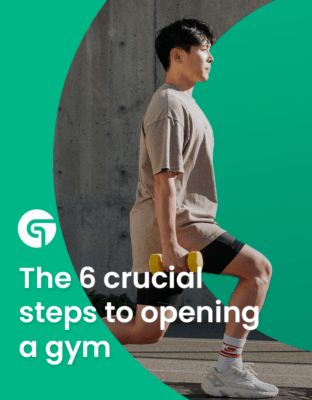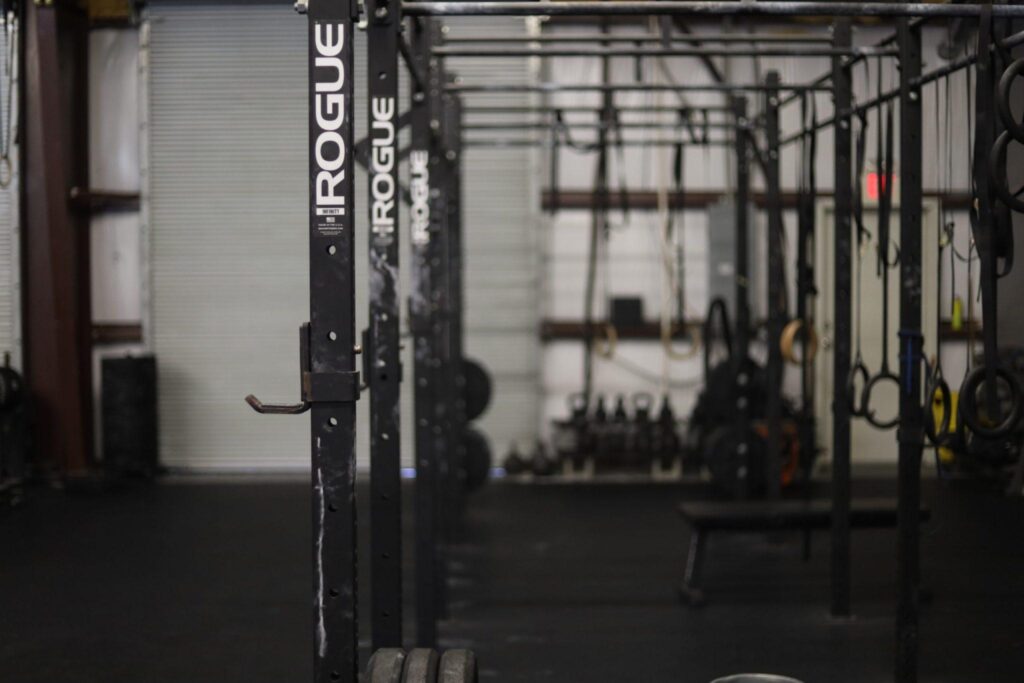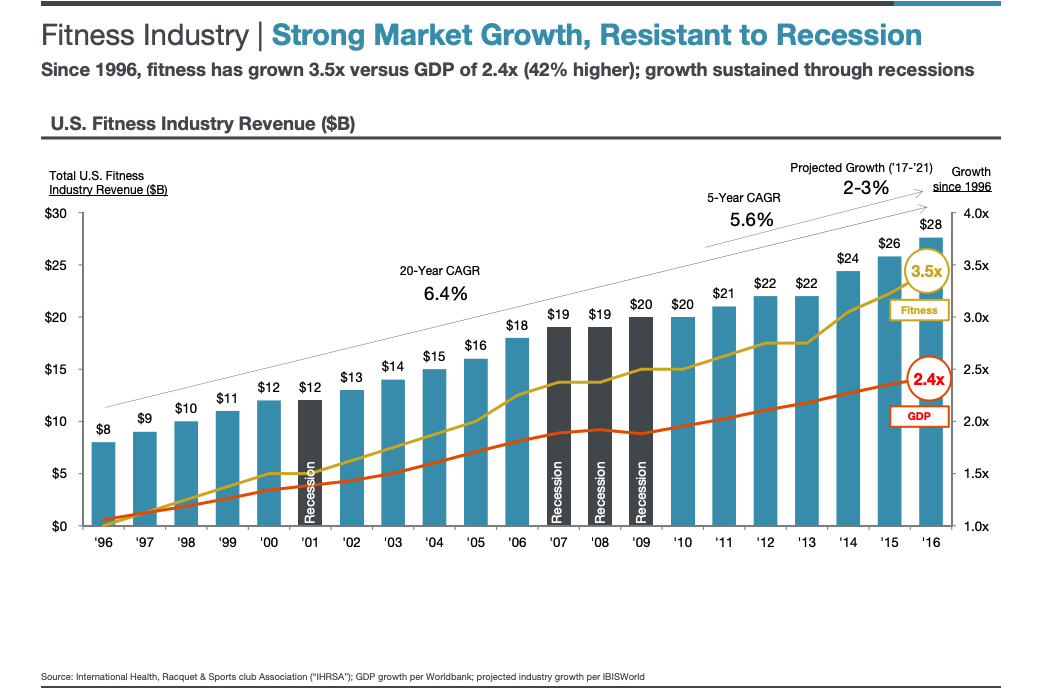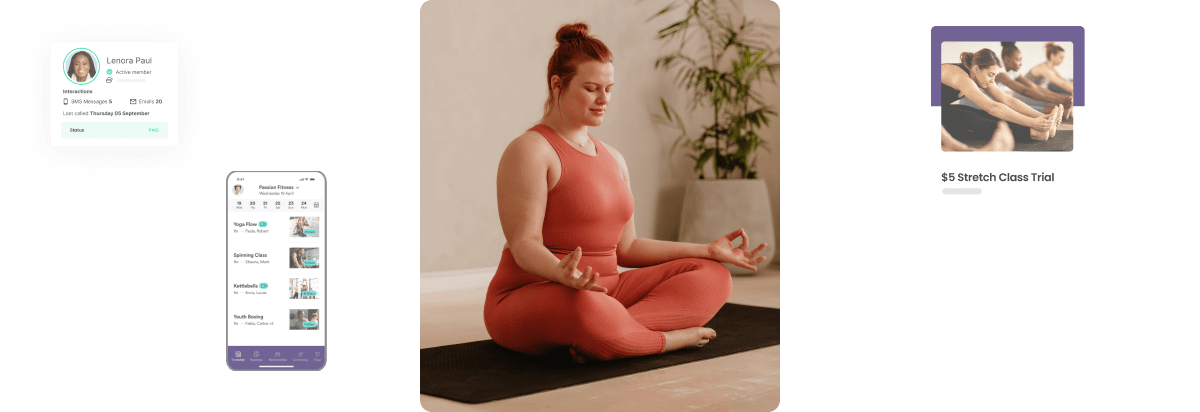Why would open up your own gym?
Why leave a secure and stable job and take the plunge into entrepreneurship?
The likely answer is that you have the itch to run a fitness business that won’t go away. It’s your passion, and any other path you could take in life will pale in comparison to this.
Take Mike Lipowski for example. The founder and owner of Pure Physique in New York, the former bodybuilder started his fitness studio because he knew that opening a gym was the thing he wanted to do more than anything. He told us as much on an episode of The Glofox Fitness Founders Podcast. When talking about his life and career in fitness, he explained that he was born to run a fitness studio;
“I went and did it because I never really thought of going on any other path. To me it was just like this is where I want to be. This is where I want to spend my time. This is what I want to do”
We were lucky to have Mike come on and impart his wisdom. Sitting down to write this blog, it struck me that the wealth of information that I and the podcast team have gathered from our guests needs to be shared in this article on opening a gym. First I will go over the key advantages of opening a gym in today’s market and the vital bases you need to cover when starting up. And then I will take a deep dive into the 8 essential lessons our podcast guests laid down about opening a gym.
Skip ahead to:
What Are the Advantages of Opening Your Own Gym?
A healthy industry: US health club revenue has increased by 30 billion between 2017 and 2018 – a 7% rise. The millennial generation (22-37 years old) are driving this with Salon.com reporting that this generation topped participation and activity levels among all generations in 2017. Picking up a set of free weights over an ice-cold beer after work is becoming the new norm. On top of that, the industry has proven to be recession-proof – as seen in the graph below.
Another sign of this explosion of studios in every town and city across the country, taking up the commercial spaces left behind by shops and offices. The New York Times details this new phenomenon superbly and they show how high price boutique studios are clustering up in the same way a row of restaurants would, giving fitness consumers a range of choice.
Which leads us onto the final reason – the emergence of boutique fitness studios. There is now more choice than ever when it comes to working out. Studios like Orangetheory, F45, and Soulcycle have broken into the mainstream and are driving real change in the industry due to their popularity. So much so that between 2012 and 2015, memberships to boutique fitness studios grew by 70% in comparison to memberships at traditional gyms that grew by 5%. The choice is not just limited to the consumer though, fitness entrepreneurs now have a wealth of options when setting up a business.
Big potential for growth: Two studios we mentioned – Orangetheory and F45 are now huge franchises that have locations spanning the globe. Similarly, a more traditional gym franchise like Anytime Fitness or Snap Fitness has expanded its reach across different cities and countries. Now this doesn’t automatically mean you will reach those heights (maybe you will!) but it does show that this business model has proven it can be replicated in different locations; be it the franchise or multi-location model.
To give you an example of a smaller studio growing from a single location successfully, let’s take a look back at a profile we did on Glofox customer Posto Nove. The Beirut based yoga studio franchised out to the Ivory Coast and after some initial teething problems, it’s now thriving. They are now looking to franchise a third and fourth location closer to home and are a great example of a smaller fitness business expanding into new locations.
You are in control: Talk to any fitness business owner and they will say one of the most satisfying elements is seeing your vision come to life. The journey from an idea in your head to a living breathing business can be a bumpy one, but once you open the doors for the first time the dream becomes a reality.
And you are the person completely in control of this vision. On the surface, this seems great and there are definitely advantages to owning your own business. However, there is more than meets the eye. While you are the boss, in theory, the reality is that you are answerable to your employees, your customers and the commitments you make to vendors and suppliers. You are now the last line of defense and the blame will ultimately fall on your shoulders when things go wrong.
Be prepared for this.
You are transforming people’s lives: Why did you get into fitness in the first place? For most gym owners, it was to help people live fitter, healthier and happier lives. As an instructor or personal trainer, you had elements of control of what you could and couldn’t teach and you may have been tied to the philosophy of the gym owner.
Now you are in the driving seat you can help people get results in a way that you feel is the best. As well as that, there is nothing more rewarding than seeing someone embrace your teachings and alter their way of life for the better.
What Do You Need to Get Started?
There are a couple of bases you need to cover in the run-up to the first day of business. Premises, insurance, and gym management software are just some of the things you need to think carefully about when in the pre-launch stages.
The Premises
Picking your location is one of the most important decisions you will make. In an ideal world, you want a location with a lot of foot traffic in a central location but, these types of premises can be tough to get. It will also make up the bulk of the operational costs. Rent, water, electricity and heating will eat into your cash flow regularly. On top of a location, you need to factor in how much building work the premise needs. Different types of gyms require different layouts, gym equipment, and facilities so you need to consider this when making your choice.
Licenses and Insurance
There are a number of licenses and legal documents that you have to attain before setting up the business. You will need a business license, Certificate of Incorporation and Employment Agreement for new hires. There is a lot of vital documentation that goes into running a gym and you need to be on top of it. The best advice here is to hire a lawyer to consult with you, so you are on the best legal standing from the get-go. Another area you need to cover is insurance. Gyms deal with a large amount of traffic and are no doubt prone to on-site injury. You’ll need to have business insurance in place to cover several different possibilities, as well as general liability, theft, workers’ compensation, and property-casualty insurance.
Gym Management Software
The days of running a gym with a pen and paper or an excel sheet are well and truly over. Technology now powers the most successful gyms and franchises so you need to pick the right type of software for your fitness business. At its core, gym management software is the nervous system of your gym, controlling things like payment tracking, membership management, lead management, class bookings, and class scheduling. It allows you to make key business decisions fast by providing valuable data insights about your members, employees, and business at large. Most software worth its salt now powers a customer-facing app to make the members experience as seamless as possible.
8 Essential Lessons The Experts Taught Us About Opening a Gym
Let’s dive into the lessons from those who have been in the trenches and have come out the other aide to tell the tale. From the importance of having a solid plan to how you can create a growth powering retention strategy, these 8 lessons cover every important aspect of opening a successful gym.
1. Planning Will Save You in the Long Run
A quick note on our first contributor – he technically hasn’t been a guest on our podcast but we hope to get him on the future as he the fitness business planning guru! Ibrahim Mohammed, owner of IMStrong Bristol (formerly MYGYM Bristol) contributed to our go-to guide for putting together a business plan for a fitness business.
For Ibrahim, the business plan laid the foundation for the success of his business by providing a roadmap to follow.
“What I believe is that once you write down what you are going to do, you know exactly how to go about it, rather than guessing along the way” explains Ibrahim. “You need to know how you are getting from A to B and on to C.”
And he is right. When you start-up and run a business, you will be diving headfirst into the ocean of issues that can very quickly sink you. But if you have a plan written down that reminds you of the next step you have to take, hopefully, you will be rise to the surface and keep going. A note of caution though, don’t get too tied up in planning as you will get nowhere fast.
Simplicity is key.
2. Think Specific and Think Narrow
AKA find your niche.
Trying to be a “one size fits all” type of gym to appeal to a broader market just won’t cut it these days. The boutique revolution has given people more choice and the desire to chase the most unique experience possible. The result of this that a bland, middle of the road offering won’t appeal in today’s world. You need to define a target market.
This was also the opinion of Richard Wolff, who has been the industry for over 25 years and has seen his fair share of ups and downs in that time. He is the owner of Medfitness, a science-based 25-minute strength training program that is completed twice a week.
The 6 Crucial Steps to
Opening a Gym or
Studio
Discover more When he spoke to us about his life and times in the fitness industry, he passed on this brilliant piece of advice on defining what you are as a gym business.
“To be successful, you really have to drill down on some specific entity. Whether it’s a product or service and the one thing that we’ve done, that I’ve done for thirty years is getting more specific and more specific and more specific.”
He goes on to say that
“When we look at successful people and successful entrepreneurs in any industry, whether it’s business or musicians or whatever it is, if you’re going to be good at something you have to own that one thing.”
3. You Need to Know the Cost
The financial side of opening up your own gym business is something we covered in our article on counting the cost of opening a gym. The startup costs for opening a gym business can vary massively depending on the size, location, facility and the type of gym you open. Note that it’s almost impossible to give an entirely accurate estimation that represents all gyms. Different gym owners start-up different types of gym businesses, and the start-up costs will differ depending on the facility and on launching. The basic start-up costs can range from $10,000 to $50,000 on average.
Ladystrong owner Brittany Welk emphasized the importance of knowing your numbers.
According to her:
“A big thing is understanding your numbers and understanding your cash flow and how to operate your business from a financial perspective because that can be hard. A big lesson and a big takeaway that I’ve had is that you really have to know your numbers.”
Money makes the world go road and this the same when running a fitness business. The key is to be aware of how much you are spending so you can survive those first few months.
4. Figure out How to Get Leads – and Quickly
The truth is that while you have boundless enthusiasm for your gym, the average person will see it as just another gym in the area. This is called the “build it, and they will come” mindset. You need to get out of that and into “making it their only choice” mindset by throwing yourself into the trenches of social media marketing and lead generation. The number one thing you need to worry about is where your leads are and how you are going to get them. But do you learn how to do this yourself or do you get in an expert?
Fitness marketing guru Mike Arce gave us a very clear answer to this question when he joined us on the podcast a couple of months ago. He said:
“If you’re starting, you should hire someone. Like you should hire an agency or you should go through courses because it’s not like we’ll just start with Facebook ads, and don’t worry about the landing pages, don’t worry about the automated emails.”
The key point that Mike makes is that you shouldn’t “just do something”. You need to go all-in, whether it’s hiring an expert or becoming an expert yourself. Whatever the decision, you need to make it quick.
Mike Arce hosting his podcast. Source: mikearce.live
5. Prioritize Pre-Sales
No matter what type of gym business you are running the reality is that a hell of a lot more money is going out in comparison to what’s coming in with things like rent, electricity, equipment, salaries, and insurance. The biggest mistake a lot of gym owners make is that they don’t prioritize pre-sales in the run-up to the grand opening. Because of this, they are starting immediately on the backfoot. Prioritizing pre-sales forces you to get your name out in the local community before the doors open and this can only be beneficial.
Of all the challenges of owning a gym, sales can be one of the most difficult. It takes both skill and practice. Membership sales guru Erik Russell gave us a rundown of all things gym sales recently and he gave this key piece of advice on putting the prospects at ease;
“I’ve got to allay their fear, I’ve got to reassure them that they are going to be taken care of, that they are going to fit in with everybody else. And I’ve got to do that right out of the gates because if I do that I’m separating myself from everybody else in the marketplace because nobody else is doing it. Everybody is talking about themselves and they do have the right intentions but they don’t really get the prospect side of the business.”
As you can see, it’s all about helping the person rather than selling to them.
6. Document Everything
As you scale your gym business, a big challenge will be to spread the knowledge that you have acquired across your expanding team. In the beginning, it may be tempting to be very hands on with onboarding new staff as your team is small. However, as the team grows there will be the temptation to onboard every member of staff personally. This will be a waste of time and resources that could be spent more efficiently in other parts of the business.
The solution? Start making playbooks for everything early on.
Another great piece of advice from Brittany Welk centers around playbooks. When she hired her first studio manager, she realized that a breakdown of communication had occurred in onboarding. She said that:
“…it really wasn’t until I sat down [the playbook] and I wrote down, and dialed in, and had weekly meetings with her, that we really got on the same page because she understood the process, she understood the job, she understood what needed to be done, and I understood how she works and she understood how I work.”
Document everything, from sales processes to marketing strategies. When it comes to hiring the staff it is especially key and according to Brittany; “documentation and doing your systems are so important, and I would say it is a priority over hiring staff.”
7. Think Outside the Box with Your Marketing
We always stress the importance of using paid social media advertising to generate leads, it shouldn’t be only part of your marketing strategy. Sometimes you need to think of creative ways to generate leads and the man who is at the forefront of this in the world of fitness is Stuart Brauer, studio owner, gym consultant, and owner of WTF GYM Talk.
One brilliant strategy he talked about was influencer marketing. We know what you are thinking – how will I afford to pay someone with thousands of followers to promote my gym? According to Stuart, this couldn’t be further from the truth. His strategy is to turn your members into influencers. Genius! He says;
“Instead of one person with 100,000 followers, how about 50 of your clients that each have 1,000 followers. Who follows Sally, who’s been a member of your gym for two years? Sally’s friends, family, and co-workers. So why don’t you make your clients your influencer?”
Cost-effective and simple, there is no contract or deal. You simply get a camera, give them a free branded t-shirt and take some great photos that you can share on your page and more importantly, they share on their channels. This can be implemented from Day 1 – you should have members ready to go from your pre-sale drive so get some of them on board!
8. Create a Retention Strategy from Early On
We’ve written a couple of blogs on retention – most notably this article on building a retention strategy for your business. The reason is that it is the only way you will grow your gym business. Getting leads in the door and converting them to members is, of course, important but if you don’t retain them you will be going out of business quickly. In our previous retention research, we found that it costs nine times as much to acquire a new member as it does to retain an existing one. In reality, you need to have a retention strategy in place during the earliest days of your business.
One man who knows all about retaining members is Jack Thomas, owner of BASE Bangkok and the 2018 winner of Asia’s gym of the year. In a recent episode of our podcast, Jack sat down and talked to us about how he has made BASE successful, with some absolutely key advice on how to retain members. For him, growing BASE has been about getting member results – something Jack thought about early on in the business.”
“By the time we opened, I decided on our concepts and also I thought it was really important to track our client’s results. You know, you look at a lot of group classes, and you go in, you get a sweat on, you might have a heart rate monitor, you know how many calories you’ve burned. But for most group class concepts you don’t really know exactly how much stronger you are getting, and how much fitter you are getting.”
So Jack decided to keep members accountable by firstly doing a monthly assessment of a member’s fitness. Then, as they invested more in technology, they were able to track their results on a class by class basis. The data they collect can be used in so many different ways to make the experience more exciting for the member and make them sticky to the studio. This type of results tracking should be ingrained in how you do things from the very beginning.
In Summary
Opening a gym can be tough and the first year of running any small business is a steep learning curve, especially the first time of asking. There will be a lot of challenges and adversity along the way and moments where you feel like giving up. But if you take these expert lessons on board and anticipate what’s coming down the line, you will be in a better position to handle these challenges and will be better able to handle any adversity that pops up in the future.
The 6 Crucial Steps to
Opening a Gym or
Studio
challenging and rewarding ventures that a person can
take.















